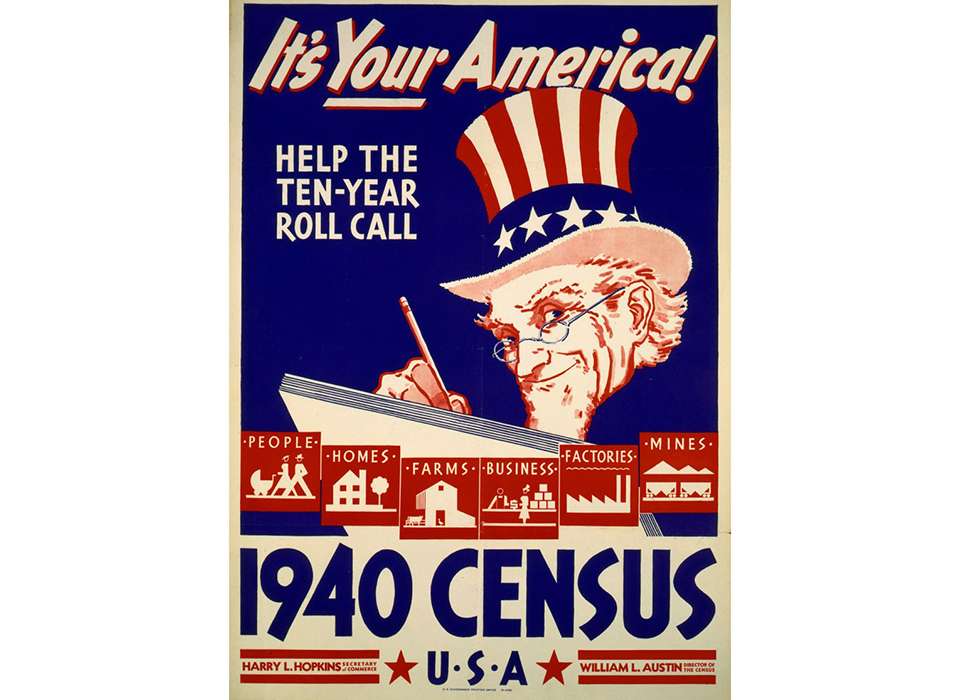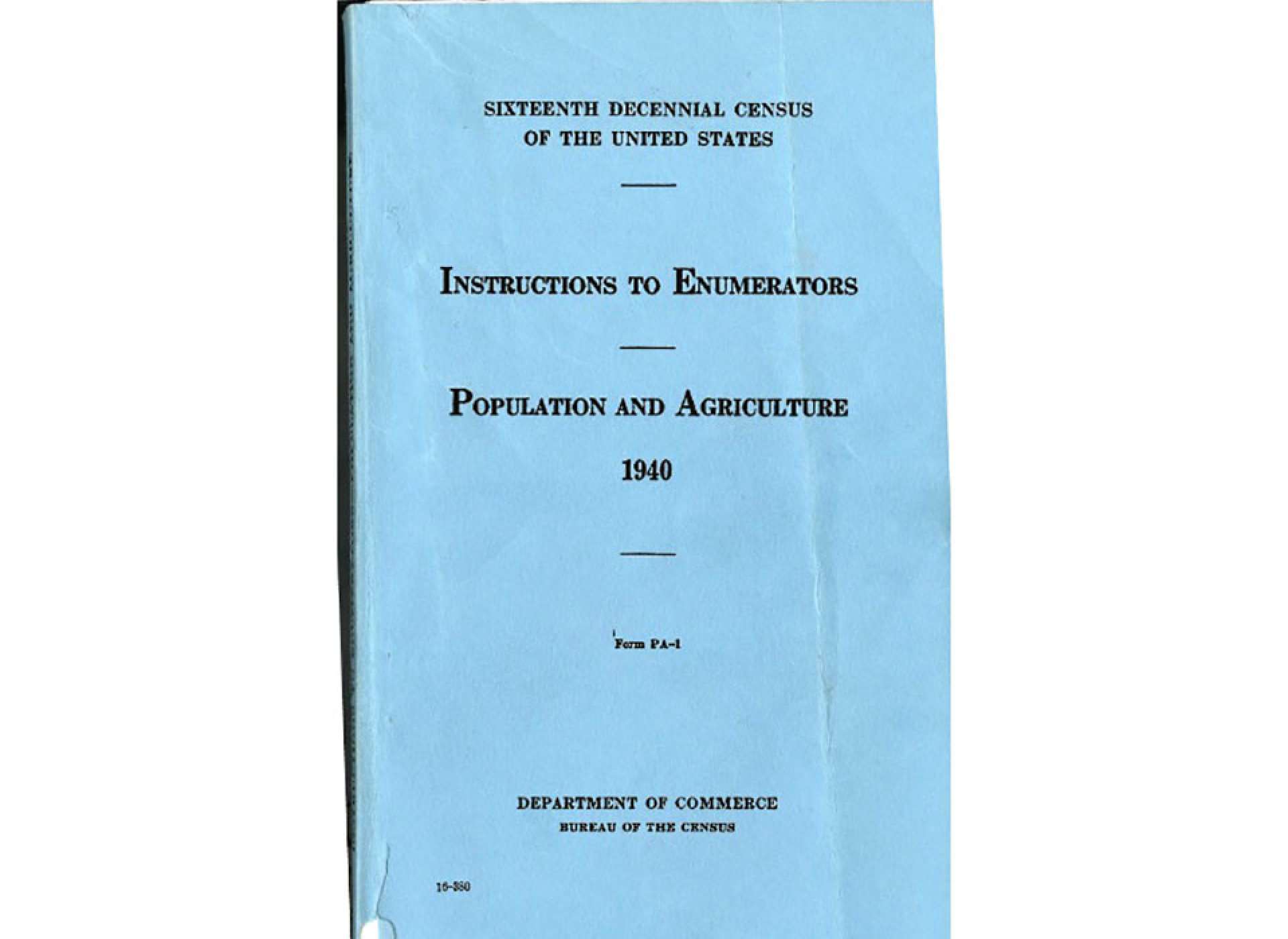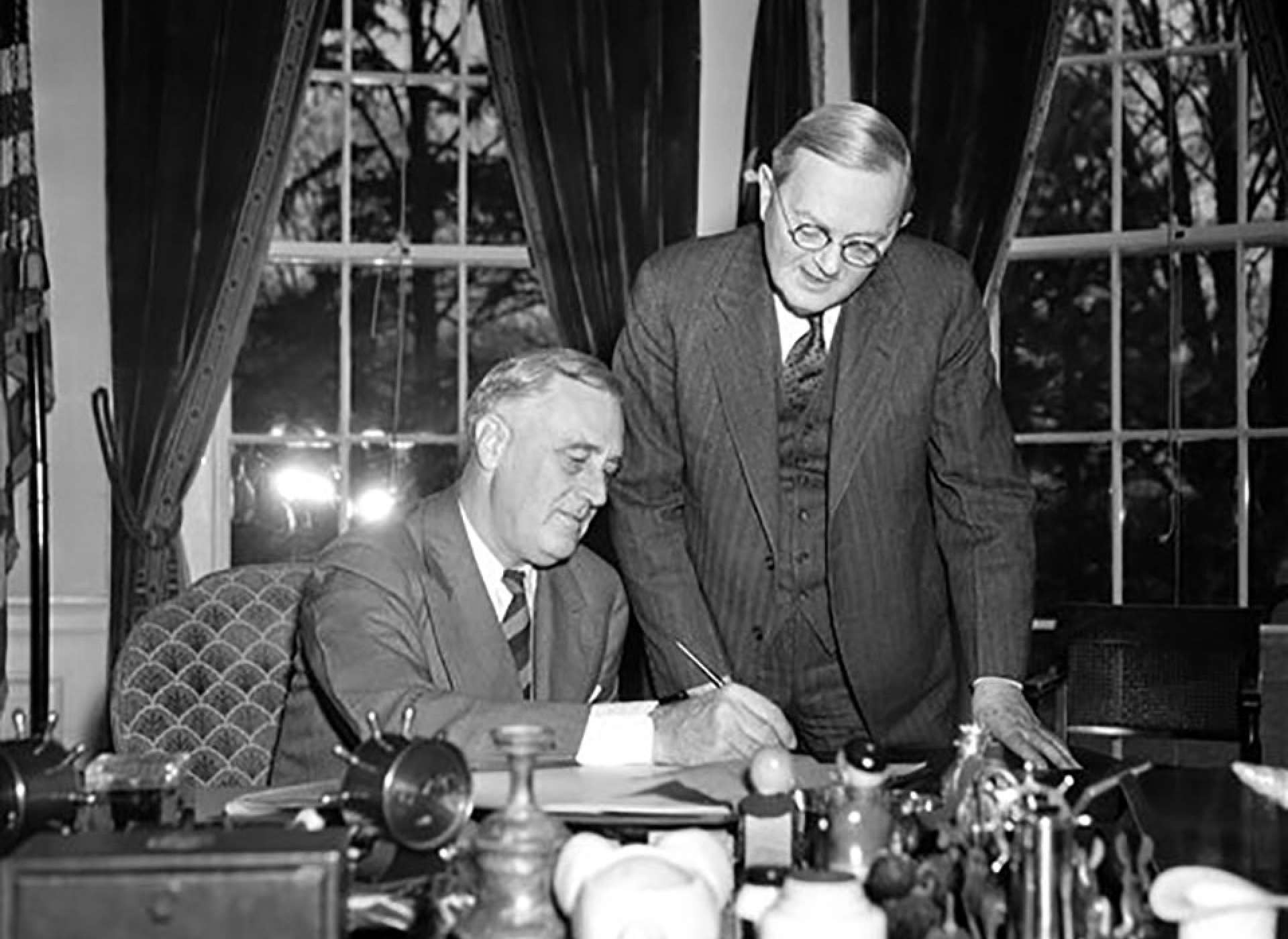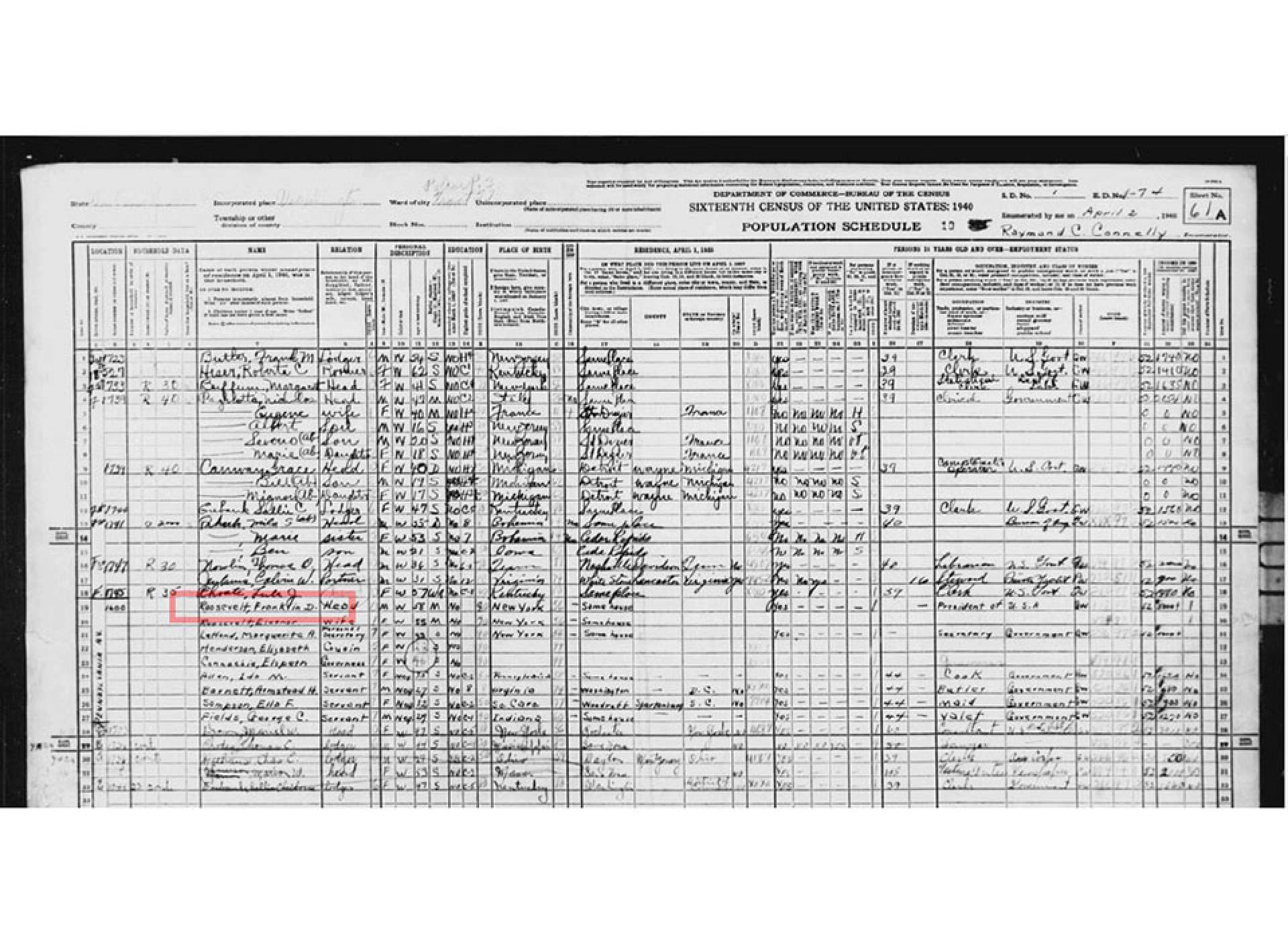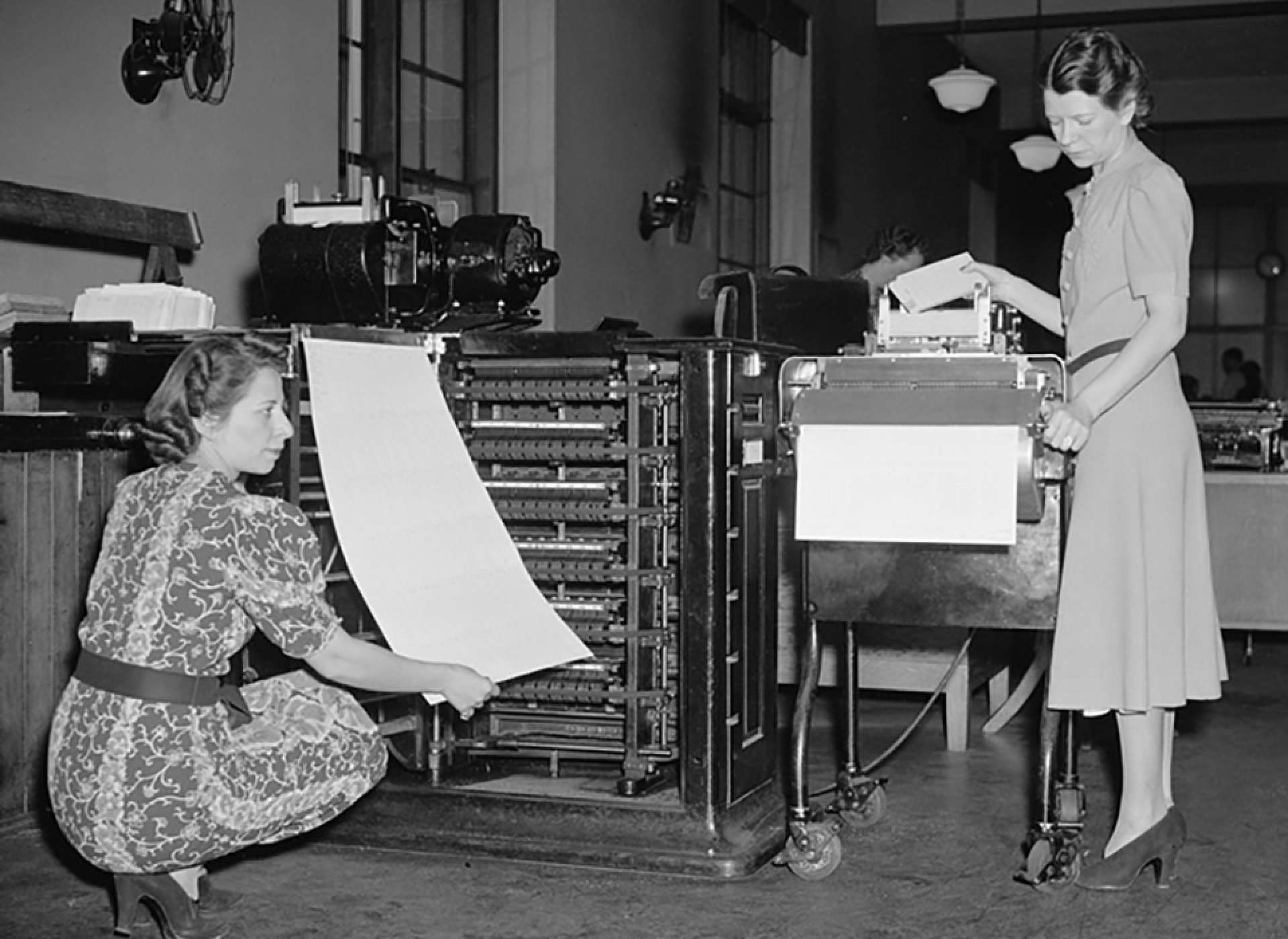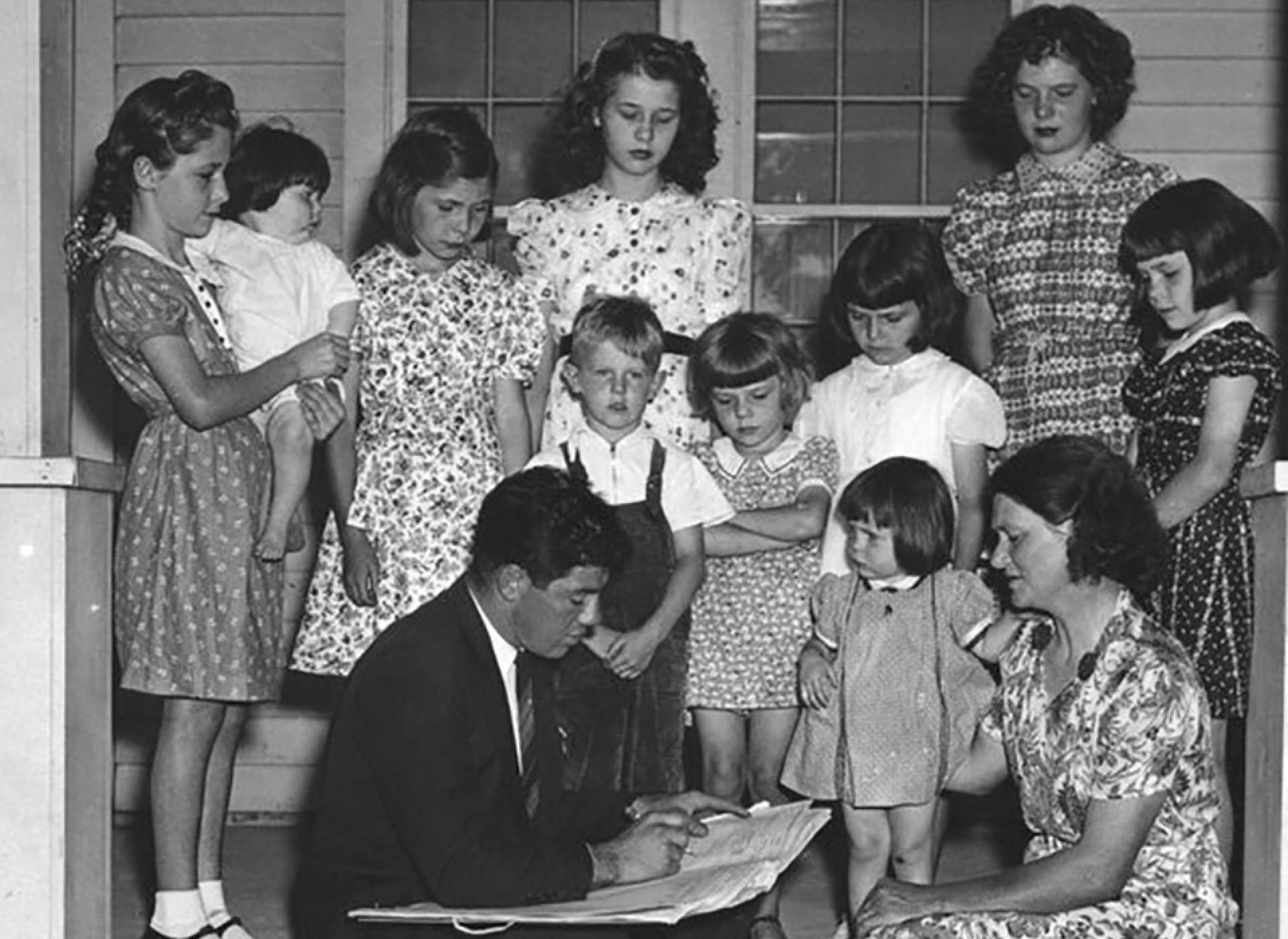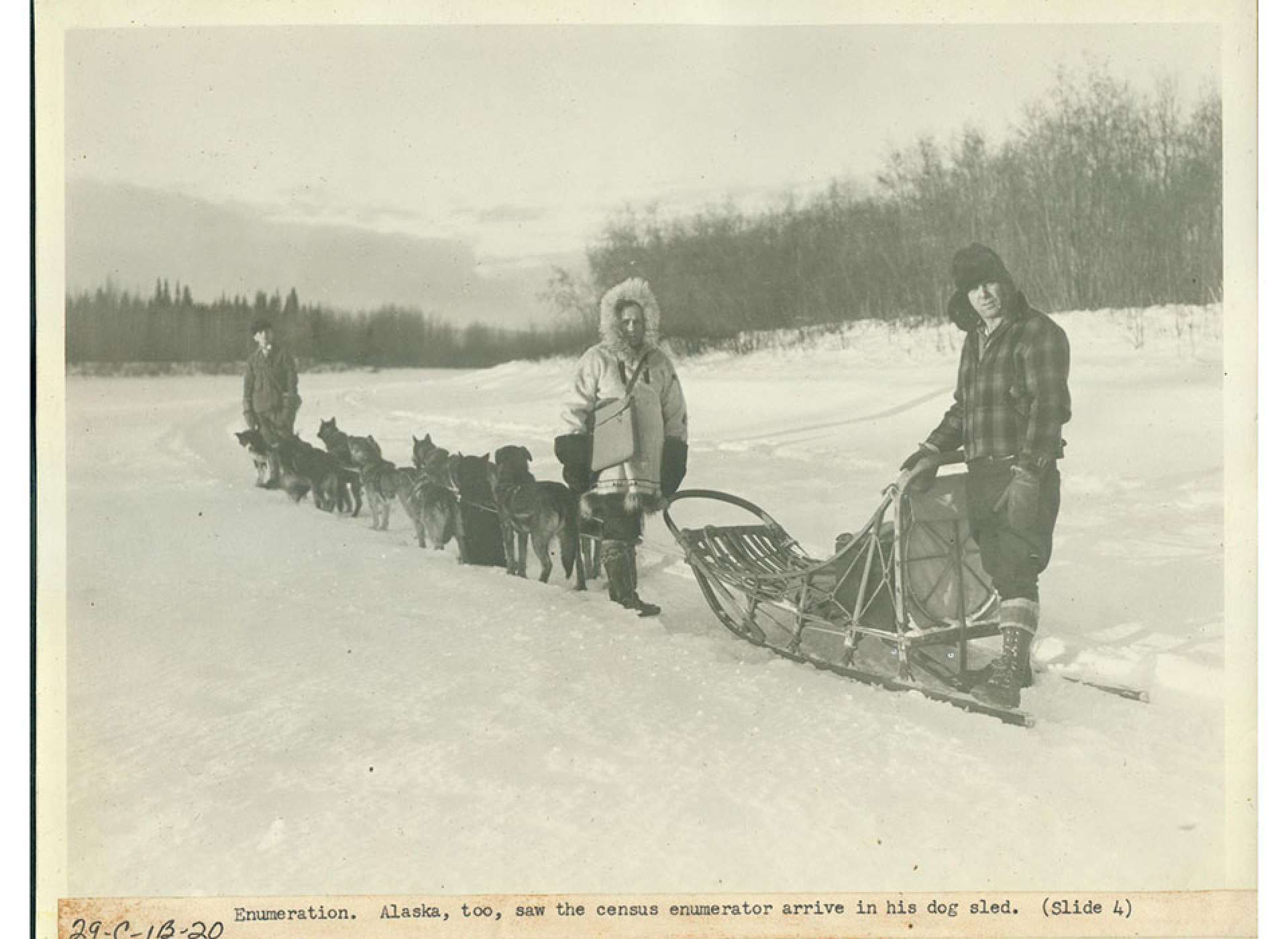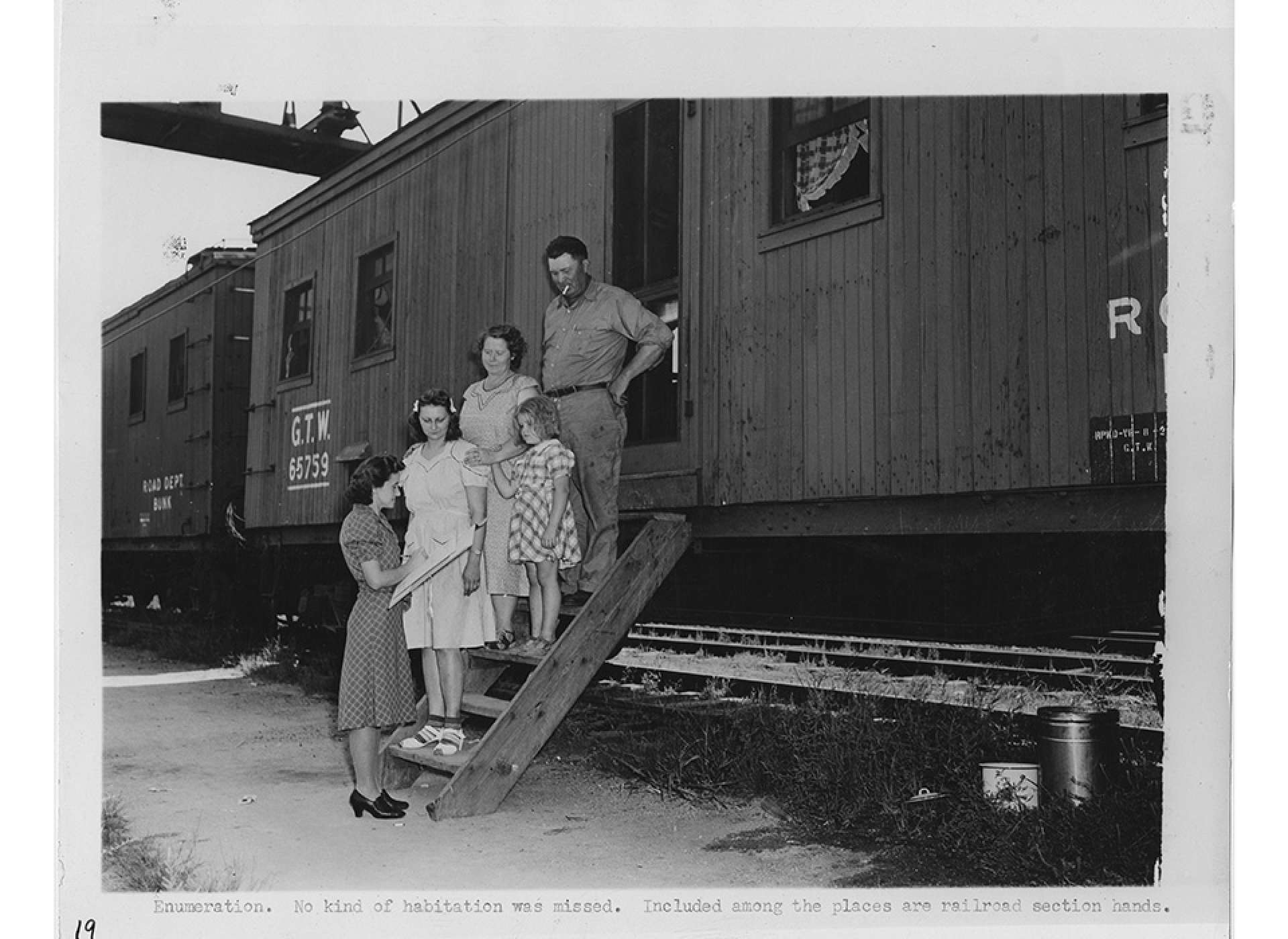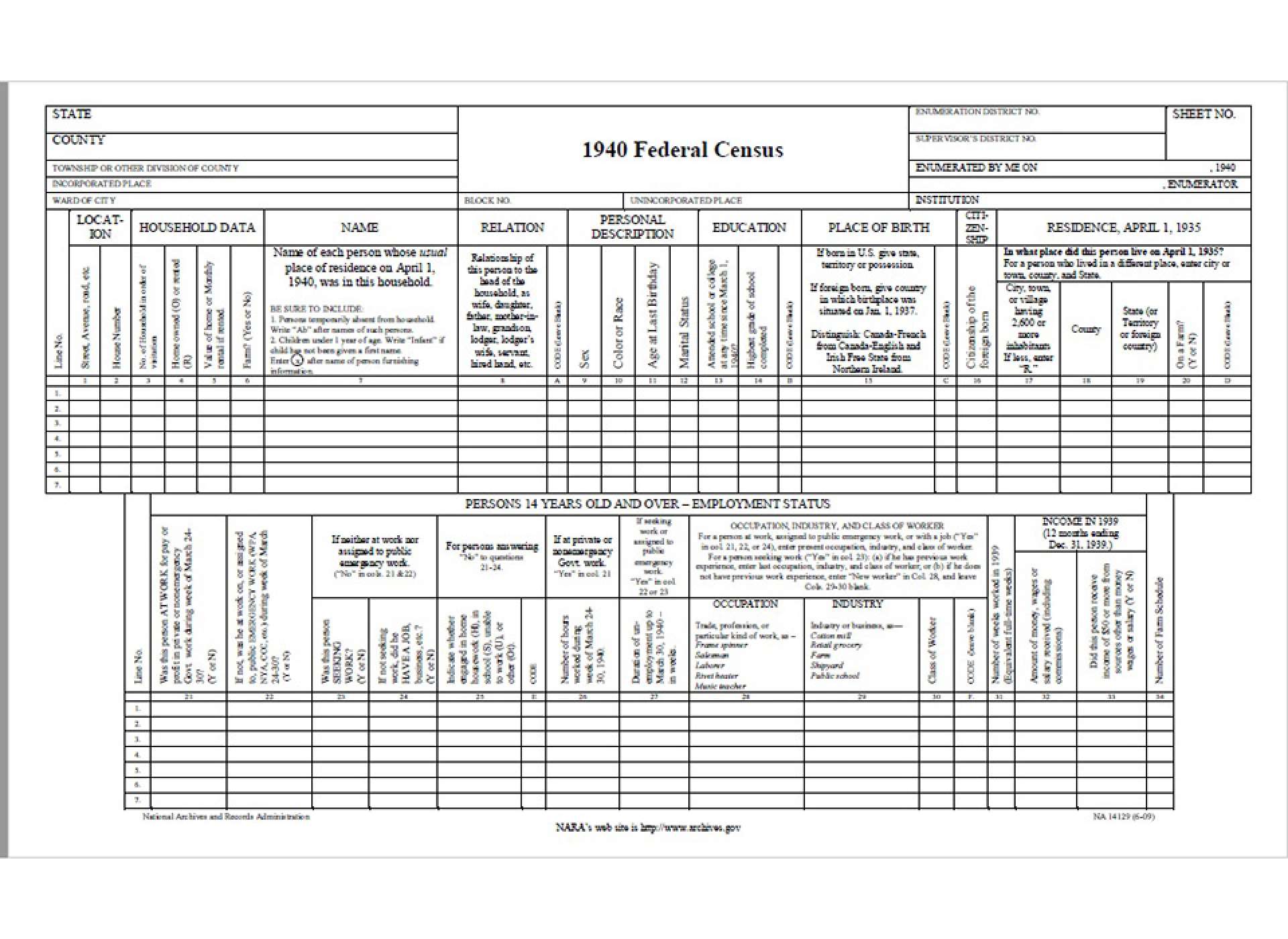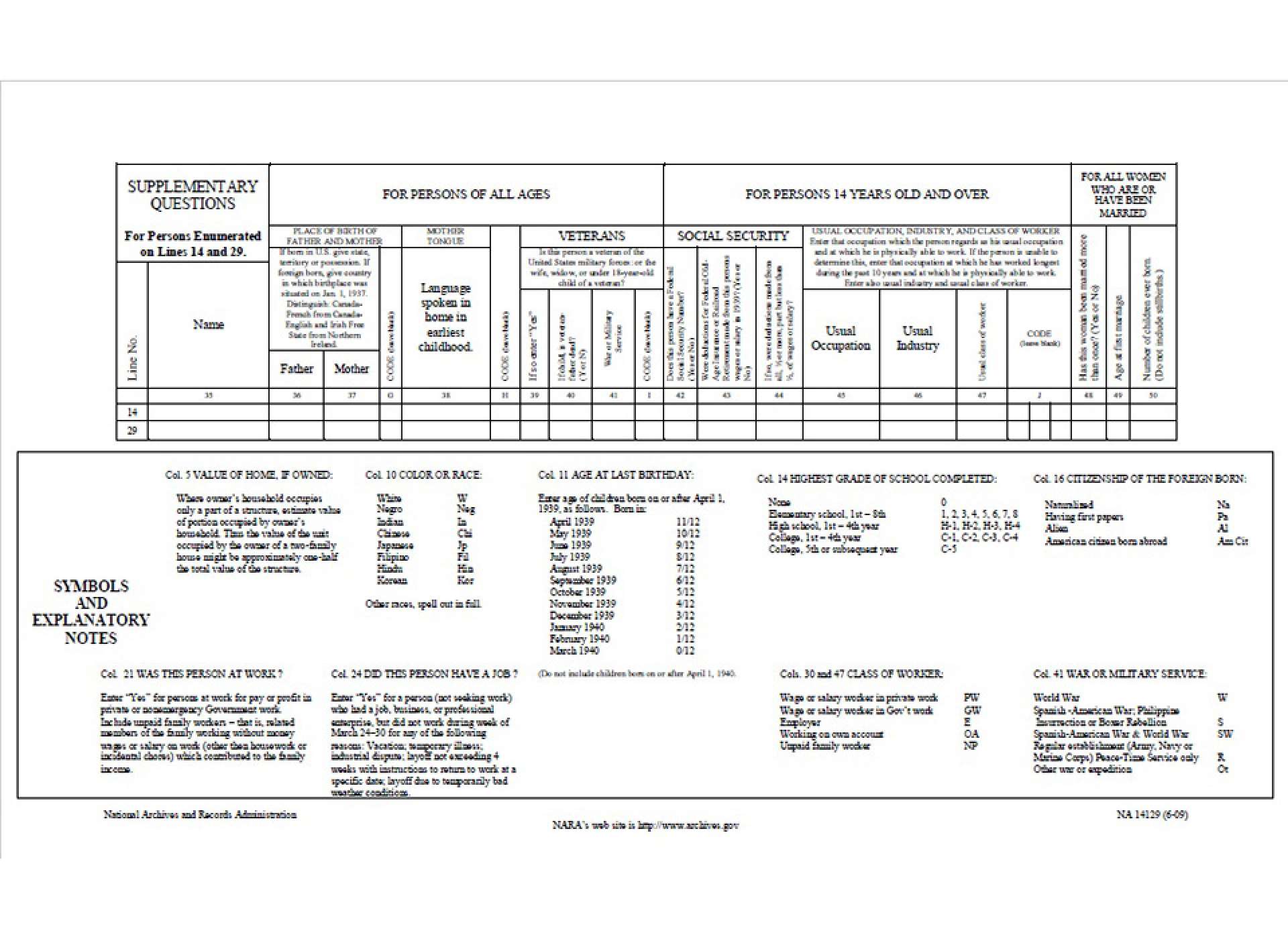Article 1, Section 2 of the United States Constitution mandates that there be an enumeration of the population of the entire country made every 10 years. The 2020 census marks the 24th census taken since the first was ordered in 1790. In its most basic function, the census determines apportionment, which is the number of Representatives a state receives in the United States’ House of Representatives.
However, the census also contains much broader implications in everything from federal funding of states and state projects, highways and infrastructure improvements, special education and free and reduced-price lunch programs for students, even programs to restore habitats and rural wilderness areas. Eighty years ago, the census of 1940—the 16th in the nation’s history—was carried out beginning in April. It would hold both immediate and long-lasting ramifications for the country and its citizens, some of which have only recently begun to come to light.
“Visit every house, building, tent, cabin, hut, or other place in which any person might live or stay, to insure that no person is omitted from the enumeration.”
-

The Abridged Instructions To Enumerators, 1940. Courtesy of the United States Census Bureau.
-

US Census Bureau Director William Lane Austin visited the White House to be photographed enumerating President Franklin D. Roosevelt to promote response to the 1940 Census. Courtesy of the United States Census Bureau.
-

Franklin Roosevelt's 1940 Census interview—the only census he presided over despite his unprecedented term in office—took place on April 2, 1940, with census enumerator Raymond Connelly. Along with First Lady Eleanor Roosevelt, the Executive Mansion was also home to personal secretary Marguerite LeHand, cousin Elizabeth Henderson, governess Elspeth Connochie, and servants—Ida Allen, Armstead Barnett, Ella Sampson, and George Fields
So read the preface to the pamphlet “Abridged Instructions To Enumerators” signed by the Director of the Census Bureau, William Lane Austin of Mississippi, from his headquarters in Washington D.C. This introduction formed only part of the instructions given to the over 120,000 enumerators charged with conducting the 1940 census across the United States, including its territories of Alaska, Puerto Rico, American Samoa, Guam, Hawaii, the Panama Canal Zone, and the American Virgin Islands.
'Enumerate all men, women and children (including infants)'…'use black ink, write legibly and keep your schedules neat and clean' ….'enumerate all persons in hotels, tourist or trailer camps, missions, and cheap one-night lodging houses (flophouses).'
Much had changed since the previous enumeration of 1930 and those changes were reflected in the data gathered by the 1940 census: it showed a growing nation moving out of the Great Depression, but still deeply feeling the effects of almost a decade of uncertainty.
Nevertheless, some things had not changed. In 1940, New York stood as the most populous city in the union (population 7,454,995), just as it had in every census taken since 1790. Following behind New York were Chicago and Philadelphia; these same three cities stood in the same order in 1940 as they had a decade earlier. Similar to the methods undertaken in the 1930 census, responsibility for tabulation of the number of the nation’s citizens in 1940 fell entirely upon individual enumerators—mostly college graduates—collecting information in visits door-to-door.
In 1930 and in 1940, the enumerators would record information such as household size, home ownership, age, occupation, literacy, place of birth, marital status and race; the last proving as complicated and controversial an issue in 1930 as it would be again in 1940 and even today. The 1930 census sought to measure the impact of the 1929 stock market crash and the effects of the ensuing economic crisis by utilizing both a standard questionnaire as well as a supplementary survey to collect additional information regarding periods of employment and unemployment.
Though the amount of questions included on the standard questionnaire of both the 1930 and 1940 census were close in number, it was the types of questions and questioning techniques developed for the enumerators of the 1940 census that makes it such a valuable tool and treasure trove of information today.
Of course, the 1940 census answered the broad questions. The population of the United States was determined to be 132,164,569, an increase of 7.3 percent over the previous 10 years, and the first decade in American history in which immigration was not a factor in population growth owing to restrictive and exclusionary immigration legislation enacted in the 1920s and 30s.
1940 marked the first occasion in which the population of every US state—48 at the time—claimed a population of at least 100,000. The median annual wage or salary for men and women stood at $956 and $592 respectively; calculated for inflation, amounting to about $15,000 for men and $9,000 for women in today’s money. The proportion of Americans living in urban areas grew to 56.5 percent. The average life-expectancy improved to 62.9 years.
In 1940, only 5 percent of Americans held a bachelor’s degree or higher. 5.1 million Americans lived on farms they either owned or lived on as tenants. An automobile accident fatality occurred every 15 minutes. All of these answers and more were contained within the census, as was the annual diphtheria death rate, the production rates of oleo, butter and margarine, households lacking indoor plumbing, and the number of cases of identical twins.
-

1940 Census Processors. Following completion of the census, the original enumeration sheets were microfilmed; after which the original sheets were destroyed,. Courtesy of the United States Census Bureau.
-

1940 Census Enumerator in the field. Courtesy of the Library of Congress.
All of this, however, would amount to little more than statistical trivia for the layperson had it not been for the 1940 census’ introduction of sampling techniques. The 1940 population census consisted of 34 questions—name, age, place of birth, etc.—but for the first time one out of every 20 individuals, or about five percent of the total population, was then asked 16 additional questions to create a ‘sampling line.’ These questions allowed the 1940 census to look deeper into the American population without unduly increasing the overall burden on individuals or enumerators.
While visiting each household, the enumerators asked individuals selected for sampling detailed questions as to their veteran status, their mother tongue or birth place of parents, whether or not they had a Social Security number or had participated in any New Deal programs, how many times they had been pregnant or how many times they had been married. The 1940 census pioneered this practice, and sampling techniques in various forms are still used within the census today.
The 1940 census also broke new ground as the first census to document details of individual housing in addition to households. Thirty one housing questions were asked of Americans in 1940, the nature of many reflecting technological advancements, but also the precarious economic threshold on which many Americans were still living 10 years after the stock market crash.
In 1940 the United States contained 37.2 million housing units of various shapes, types and sizes; this sum including everything from mansions and farms to box-cars and trailer camps. The housing questions sought to examine how Americans were living and the fruits and challenges of the New Deal. The 1940 census asked about the presence of radios, flush toilets, running water and if the principal lighting was provided by gas, electricity, or kerosene.
The 1940 census also documented internal migrations brought on by the tumult of the Great Depression, asking Americans if they had lived at the same address in April, 1935 as they now did in April, 1940. While the 2020 census contains fewer questions in general and only one directly related to housing, the 1940 housing census greatly enhances our understanding of what life was like for an average American entering the 1940s.
Just as the questions asked by the 2020 census are not without their controversy, the 1940 census, both in how its information was recorded and how its data was used, also provoked criticism. Column 10 of the 1940 census was the section reserved to record ‘Color or race.’ The pamphlet “Abridged Instructions To Enumerators” contained directives such as ‘any mixtures of white and nonwhite blood should be recorded according to the race of the nonwhite parent…’ and ‘…A person of mixed Negro and Indian blood should be reported as Negro unless the Indian blood greatly predominates and he is universally accepted in the community as an Indian.’
Along with such racist and pseudoscientific designations, the options available to select for race in the 1940 census were also limited. The choices offered were ‘White, Negro, Indian, Chinese, Japanese, Filipino, Hindu, and Korean.’ While African Americans and Asian Americans had a legitimate case for how they were individually being recorded in the 1940 census, many groups such as Latino and Hispanic Americans were not recorded at all.
One group of Asian Americans living on the American West Coast would have preferred such invisibility within the 1940 census. In the early 2000s, after decades of denial, what had been claimed by many Japanese Americans—victims of racial panic and unconstitutional incarceration in the wake of the Japanese attack on Pearl Harbor and Executive Order 9066—was finally proven true. Despite guarantees of privacy and assurances of confidentiality, it was revealed that the Census Bureau had provided information from the 1940 census to several government agencies including the United States Army and Secret Service.
The information on neighborhoods, households, and families were handed over to use to locate and facilitate the evacuation and incarceration of Japanese Americans beginning in February 1942. The official in charge of the removal of these over 110,000 Japanese Americans, Lieutenant General John L. DeWitt, would write in a report that "the most important single source of information prior to the evacuation was the 1940 Census of Population.” Sadly, fear over who has access and use of the private information of individual Americans is not solely a product of our times.
-

'Enumeration, Alaska Too Saw the Census Enumerator Arrive in His Dog Sled.' Courtesy of the National Archives and Records Administration.
-

'Enumeration, No Kind of Habitation was Missed, Included among the Places are Railroad Section Hands.' Courtesy of the National Archives and Records Administration.
Seventy two years must pass from the date in which the census information is collected to when it is released to the public, which means the 2020 census data will be available in 2092. The 1940 census, released in its entirety in 2012, is available for free online and, as outlined here, is a remarkable tool for students, teachers, historians and laymen alike. The 1940 census forms a critical link to our shared past and provides a window into an American world one year away from being engulfed by war.
-

1940 Census Schedule. Courtesy of the National Archives and Records Administration.
-

1940 Census Schedule. Courtesy of the National Archives and Records Administration.
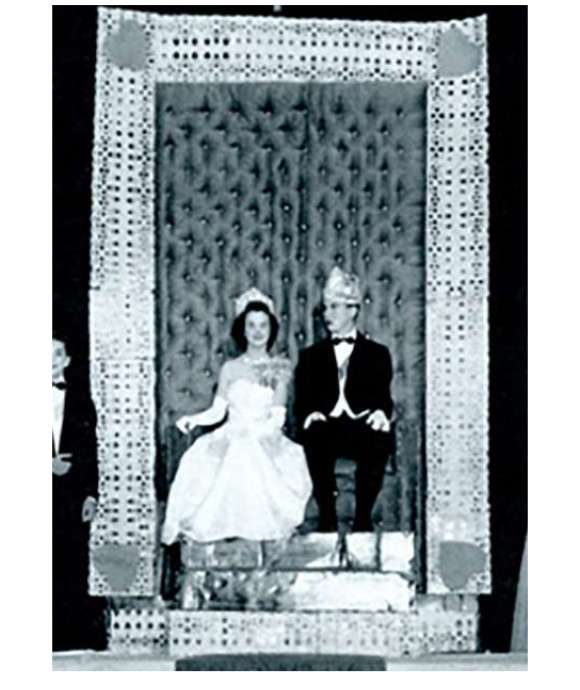
The Last Dance - Prom in Wartime
Although the precipitating events could not have been more different, both high school students in World War II and high school students today have seen their school lives disrupted and irrevocably changed seemingly overnight.
Collin Makamson
Collin Makamson is the former Assistant Director of Education for Curriculum at The National WWII Museum.
Cite this article:
MLA Citation:
APA Citation:
Chicago Style Citation:
